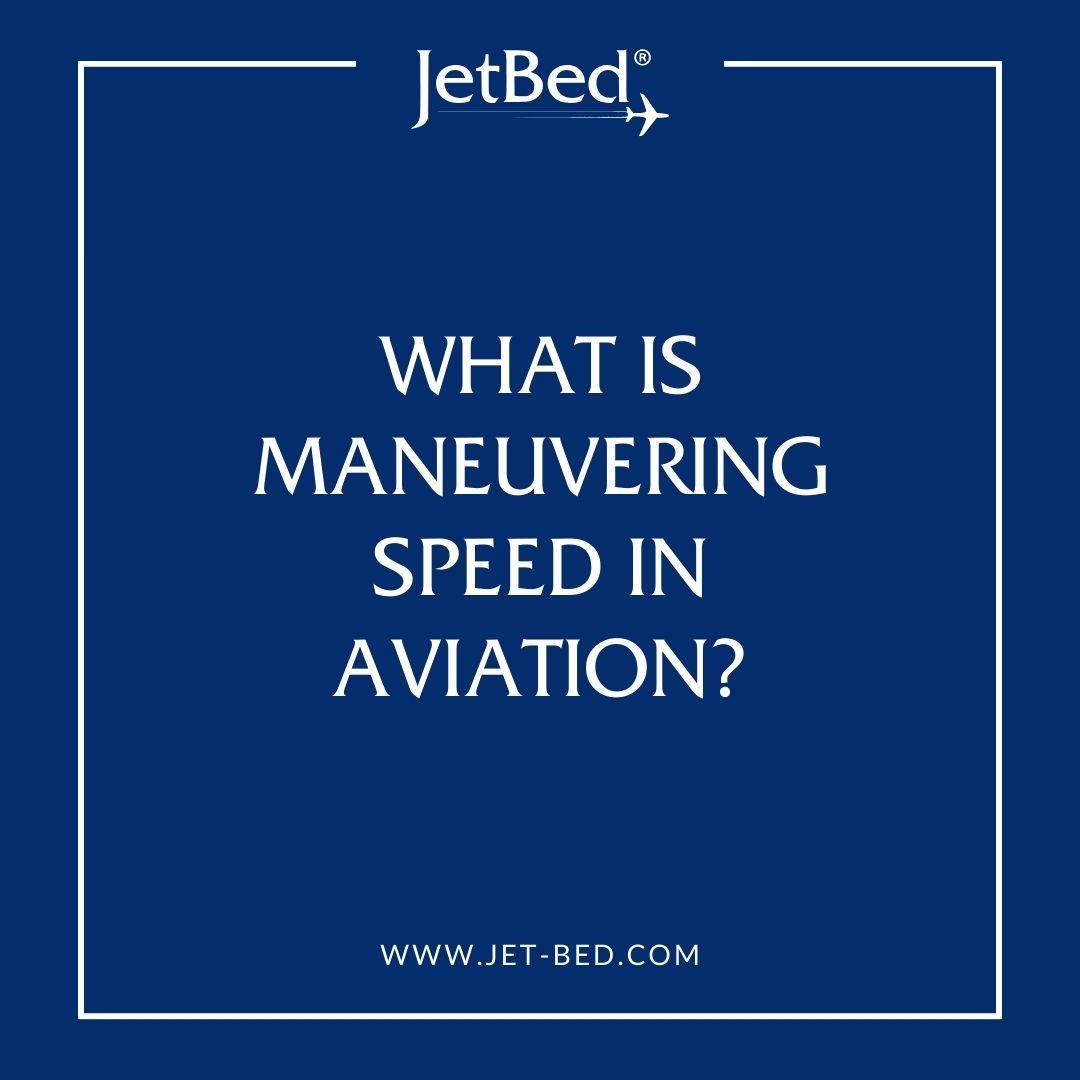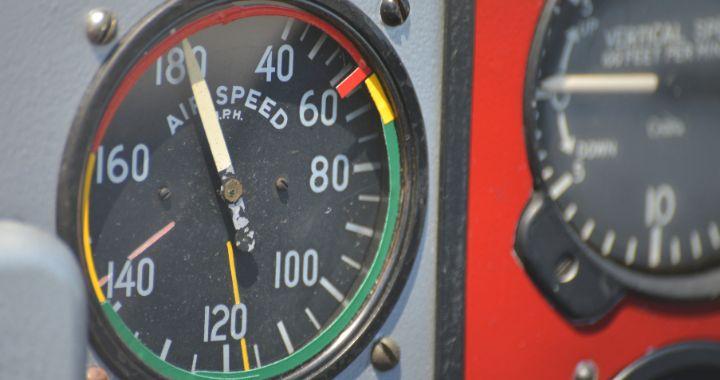Understanding aerodynamic principles is paramount for pilots to safely control their aircraft. Aviators must grasp fundamental flight dynamics such as stall speed, load factors, control effectiveness, and centers of gravity. Of particular importance is maneuvering speed: the maximum airspeed allowing full flight control inputs without exceeding structural load limits.
Maneuvering speed establishes an important boundary for pilots during flight training maneuvers as well as real-world operations. It is crucial aviators accurately determine this limiting parameter for any given weight condition and abide by the stipulated speed.
In this post, we will explore the significance of maneuvering speed and how aviators are expected to calculate this essential value.
Before we get started, don’t be left out of the current trend in aviation comfort and pleasure. Yes, that’s right! Jetbeds, your key to seamless rest and comfort. Made in the USA, Jetbeds are the most comfortable way to fly!

What is Maneuvering Speed in Aviation?
Maneuvering speed refers to the maximum speed at which full deflections of flight controls like ailerons, rudders, and elevators may be used without risk of structural damage. Aircraft have a specific design maneuvering speed (Va) at which the limit load factor is equal to 1 g in smooth air.
Va is the speed below which a pilot can move the controls rapidly without exceeding the airplane’s “limit load factor.”
The limit load factor is the maximum g-force an aircraft can safely endure in smooth air. Avoiding stalling and sudden control movements at high speeds is crucial, as exceeding design limits can stress the airframe beyond its capacity.
All aircraft have a maneuvering speed placard displayed in clear view denoting the Va. This speed varies with aircraft weight but governs the parameters within which pilots are certified to practice flight maneuvers such as turns, climbs, and descents. Exceeding Va risks structural failure or loss of flight control.
Va assures the plane will not be compelled to loads above those it was engineered to withstand under any potential condition. Calculating the proper maneuvering speed is a crucial skill a certificated aviator must demonstrate proficiency in mastering.
Why Does Maneuvering Speed Change With Weight?
Maneuvering speed changes according to an airplane’s weight because the forces acting on its structure during maneuvers vary directly with mass.
As weight decreases, an aircraft can tolerate higher g-forces while staying below the limit load factor. This is attributed to the reduced inertia required to achieve equivalent performance.
Paraphrasing legendary CFI Rod Machado, “the smaller and lighter an airplane is, the easier it is for it to pull high g-maneuvers without exceeding limits.” The relationship between weight and maneuvering speed follows basic aeronautical engineering principles.
G-force in a turn equals true airspeed divided by the square root of the wing’s minimum turning radius. This radius decreases as weight goes down due to lower inertia, concentrating aerodynamic stresses. However, the maximum allowable load factor an airframe can withstand before damage remains constant. Therefore, the limit/design maneuvering speed must descend correspondingly as an aircraft burns fuel and lightens since g-forces rise faster than they can counteract at lower weights. A gradual airspeed decrease maintains structural safety margins.

How To Calculate Maneuvering Speed
Step 1: Determine the aircraft’s maximum certified weight.
To calculate maneuvering speed, pilots start by determining the aircraft’s maximum allowable takeoff weight, known as max gross weight. Additionally, this weight is crucial for determining various flight parameters and safety margins. This specification can be found in the aircraft’s Pilot’s Operating Handbook (POH) or Airplane Flight Manual (AFM) in the specifications section. It represents the heaviest amount the plane may legally and safely lift off the ground.
Step 2: Locate the appropriate maneuvering speed chart.
Every aircraft has a dedicated chart in the POH/AFM to correlate maneuvering speeds according to weight. Furthermore, pilots must ensure they reference the chart specific to their plane’s certification category, typically listed on the chart itself, to ensure accurate and safe maneuvering. These categories usually include normal, utility, and acrobatic.
Step 3: Identify the correct maneuver limit factor.
Each maneuvering speed chart plots a line denoting the certified limit load factor – the highest G-forces the airframe is engineered to withstand. This value is typically 2.0 but may differ by aircraft designer. Pilots select the appropriate factor.
Step 4: Apply the maneuvering speed formula.
With the max weight and load factor known, pilots use the following calculation:
- Maneuvering Speed (Knots) = √(Maneuver limit (g’s) x Max Certified Weight (pounds))
Step 5: Verify the resulting speed.
Pilots check speed computed from chart/formula against Va placard near cockpit instruments for accuracy. This ensures consistency and adherence to safety protocols. Additionally, the placard value is always governing if a discrepancy arises.
Step 6: Recalculate for varying weights.
It’s important pilots practice recalculating Va for different operational weights frequently to maintain proficiency, such as between takeoff versus landing phases. The calculator figure accurately reflects the current load factor limits. Achieving competency here is important as discussed further in our previous post: How Fast Does a Private Jet Go. Adhering to design limitations promotes safe flying.

Why is it Important to Not Exceed Maneuvering Speed?
There are several critical reasons why pilots must avoid surpassing an aircraft’s designated maneuvering speed (Va):
Flight Safety – Va demarcates the boundary where control surface deflections risk generating aerodynamic loads exceeding the airframe’s structural design limits.
Stall Avoidance – Exceeding Va brings the airplane dangerously close to stalling as control effectiveness decreases sharply at high angles of attack near the critical angle of attack.
Structural Integrity – Loads induced from rapid control inputs above Va may induce structural failures from metal fatigue like over-stressed wing spars, torn control surfaces etc.
Abrupt Maneuvers – Aggressive maneuvers at too high a speed generate unexpected stresses that could lead to a catastrophic structural failure ending in a crash.
Certification Standards– Aircraft undergo meticulous engineering, rigorous testing, and certification processes to ensure they can operate safely below a specific Va, thereby guaranteeing that stresses remain within durability allowance margins.
Stress Analysis – Complex engineering, testing, and analysis goes into determining the operational maneuvering load limits to avoid unexpected dynamic loads on the airframe.
Maneuvering speed is a key element in maintaining proper flight conditions.
In summary, observing the designated Va helps ensure pilots maintain an adequate safety buffer against unintentional high load factors that may breach durability allowances. Adhering to this regulation protects both life and investment with each flight. Proficiency demands a thorough understanding of Va.
Of course, always ensure your jets are equipped with JetBed. This innovative product transforms your jet seats into luxurious, comfortable beds for optimal in-air sleeping. Easy, lightweight, fits all planes. Should be on every private jet for a better experience. So, don’t settle for less when it comes to chartered flights; keep JetBed on your must-have list.
We hope this discussion of maneuvering speed helps to increase your knowledge bank on all things aviation. Remember to consider our fatigue-fighting products on your next trip to help you stay at your decision-making best!

